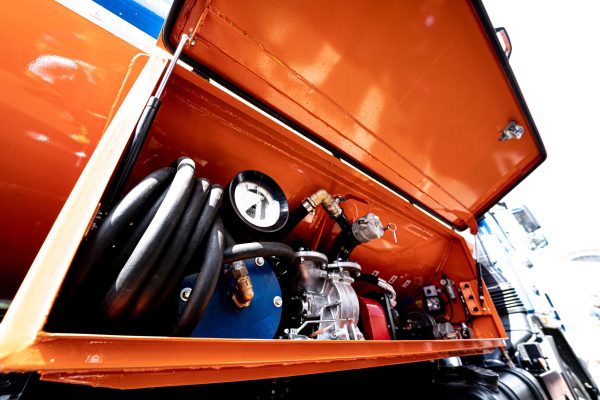The transport of dangerous goods has come a long way since the first petroleum tankers rolled onto British roads. Today’s ADR-compliant vehicles incorporate cutting-edge technology and innovative design features that enhance safety and efficiency while meeting stringent regulatory requirements.
Smart Monitoring Systems
One of the most significant advances in ADR vehicle construction is the integration of smart monitoring systems. Modern tankers and goods vehicles now feature sophisticated sensor networks that continuously monitor crucial parameters such as temperature, pressure, and structural integrity. These systems provide real-time alerts to drivers about potential issues before they become critical problems.
Enhanced Structural Protection
Vehicle manufacturers have made remarkable progress in developing more robust protection systems. The latest ADR-compliant vehicles feature reinforced frames and improved crash protection structures. For instance, modern tanker designs incorporate “sacrificial” outer shells that can absorb significant impact while protecting the inner containment vessel—much like how a bicycle helmet protects the rider’s head through controlled deformation during impact.
Innovative Materials
The use of advanced materials has revolutionised ADR vehicle construction. Composite materials, including carbon fibre reinforced plastics (CFRP) and specialised alloys, are increasingly being used in tank construction. These materials offer superior strength-to-weight ratios compared to traditional steel while also providing better resistance to corrosion and chemical attack. For instance, some modern tank containers now use specialised linings that can withstand a wider range of chemical products without degradation.
Electric and Hybrid Solutions
While still in the early stages of ADR transport, electric and hybrid vehicles are beginning to make their mark. These vehicles offer particular advantages for urban deliveries of certain dangerous goods classes, with reduced emissions and lower noise levels. However, manufacturers must carefully consider the specific safety requirements for electrical systems in vehicles carrying dangerous goods, as outlined in ADR regulations.
Advanced Braking and Stability Systems
Modern ADR vehicles incorporate sophisticated electronic stability programs specifically calibrated for dangerous goods transport. These systems take into account the unique challenges of liquid loads and high centres of gravity, helping prevent rollover incidents—a particular concern with tanker vehicles.
Automated Safety Features
While fully autonomous vehicles may still be some way off for dangerous goods transport, automated safety features are becoming standard. These include advanced emergency braking systems, lane departure warnings, and blind spot monitoring—all adapted specifically for dangerous goods vehicles.
Future Developments
The future of ADR vehicle construction looks promising, with several innovations on the horizon. These include “smart skins” that can detect and report damage or stress to the vehicle structure, and advanced fire suppression systems that can automatically respond to thermal events.
Impact on Training and Operation
These technological advances have implications for driver training. Modern ADR drivers need to understand not just the principles of dangerous goods transport but also how to effectively use and monitor these new systems. This has led to updates in driver training programmes to include modules on new technology operation and interpretation.

The innovation in ADR vehicle construction represents a significant investment in safety and efficiency. While these advances come with increased initial costs, they contribute to safer roads and more reliable dangerous goods transport. As technology continues to evolve, we can expect to see even more sophisticated solutions emerging to meet the challenges of dangerous goods transportation.
For transport operators and drivers alike, staying informed about these innovations is essential. Not only do they need to understand how to operate these new systems effectively, but they must also appreciate how these innovations contribute to the overall safety framework of dangerous goods transport.
These developments in vehicle construction demonstrate how the industry continues to evolve, always with the primary goal of ensuring the safe transport of dangerous goods on our roads.
